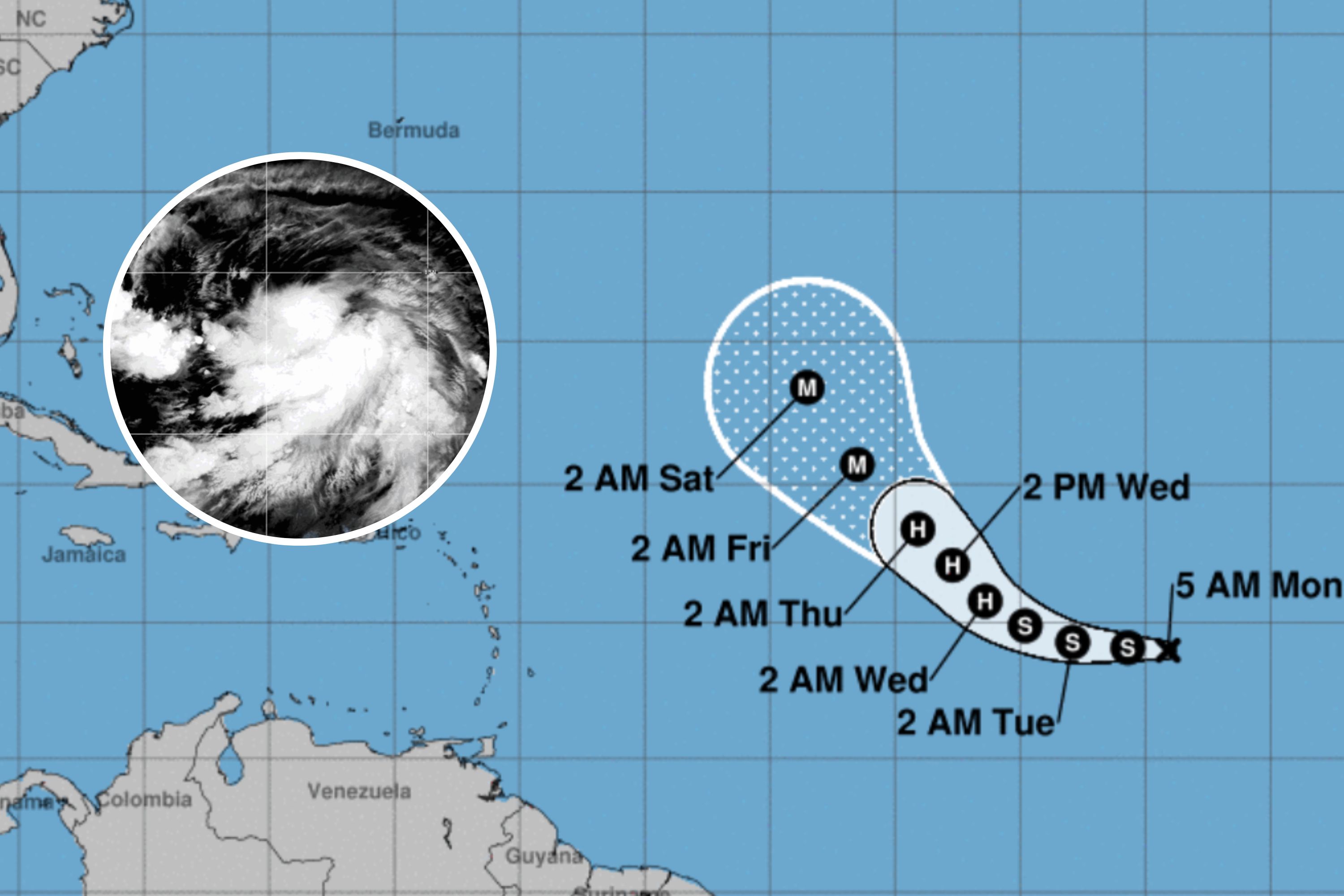A storm currently brewing in the Atlantic, Tropical Depression Twelve, is anticipated to evolve into a major hurricane, officially dubbed Kirk, by the end of this week as it approaches tropical storm status.
Right now, the depression is teetering on the edge of strengthening into a tropical storm.
Moving westward across the Central Atlantic, the system is projected to head toward the U.S. East Coast.

As per the National Hurricane Center’s advisory released Monday morning, “Maximum sustained winds are around 35 mph (55 km/h) with stronger gusts. Steady strengthening is anticipated, and the depression could be a hurricane by Tuesday night or Wednesday.”
Tropical Depression Twelve emerged from a low-pressure area in the eastern tropical Atlantic, west of Cabo Verde, and has been gaining strength as it moves westward. It’s expected to achieve tropical storm status shortly and then develop into a hurricane over the following days.
The NHC noted, “Conditions look favorable for the depression with sea-surface temperatures at 29°C [84.2°F], a humid atmosphere, and weak vertical wind shear. Given the low shear and improving structure, we predict steady intensification soon. The projection is for it to become a hurricane in the next 36 to 48 hours and potentially a major hurricane in about four days.”
A tropical storm transitions into a hurricane when specific environmental factors align, including warm ocean waters, moist air, and minimal wind shear, which, if strong, can hinder a storm’s organization.
Though Tropical Depression Twelve, soon to be named Kirk, is on a course toward the U.S., its exact landfall location remains uncertain.
This storm follows Hurricane Helene’s devastating path through the U.S. Southeast, which tragically claimed nearly 100 lives, as reported by The Associated Press. Other recent named storms include Tropical Storm Isaac, currently moving east toward the British Isles, and Tropical Storm Joyce, which has weakened back to a depression.
Hurricane Helene was a Category 4 storm when it struck Florida’s Big Bend region on September 26, unleashing 140 mph winds and severe storm surges. It then traveled inland, causing extensive rainfall and resulting in dire flash flooding in North Carolina, where over 30 fatalities have been reported from a single county.
As an emergency official in Buncombe County stated, “This is the most significant natural disaster that any one of us has ever seen,” highlighting the severity of the situation.
